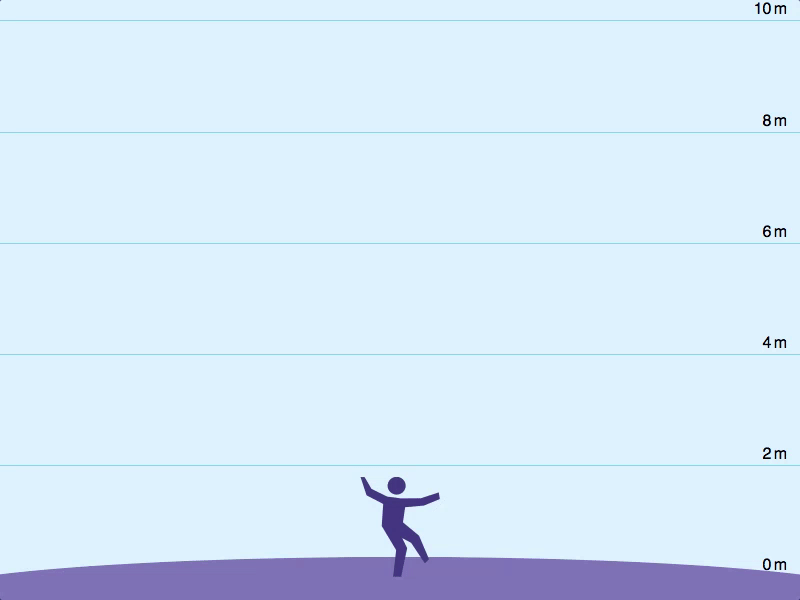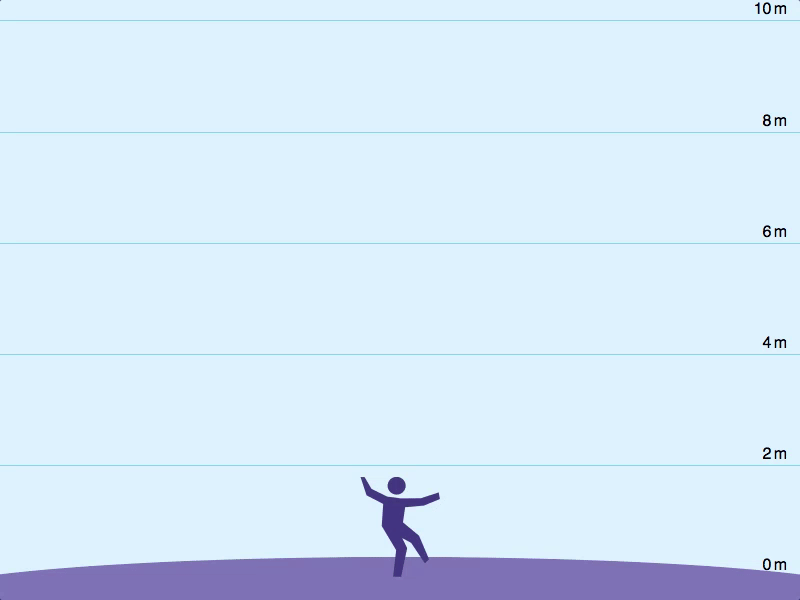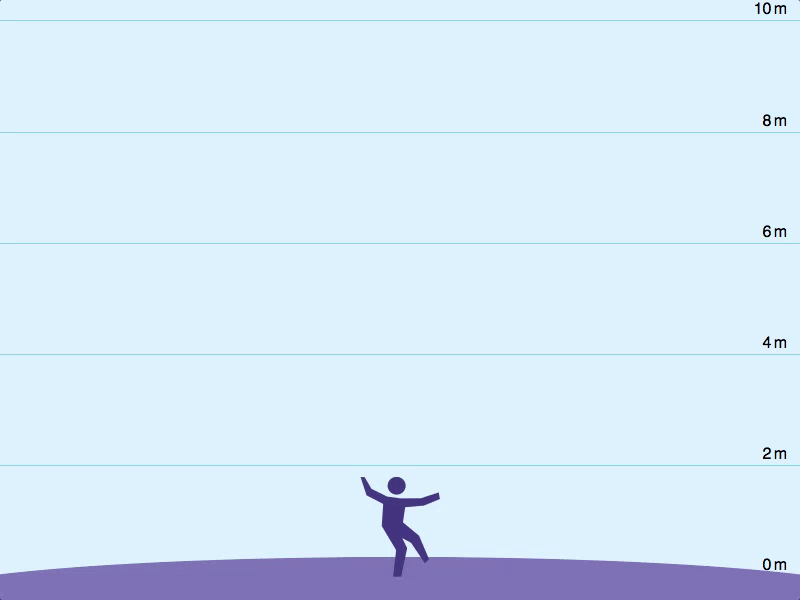This is a normal vertical hop for a person on Earth. The bottom of your feet might break 1.5 feet and the whole jump would last a second.
The moon's gravity at the surface is only 17% that of Earth's. Using the same force of a jump on Earth, you could rise about 10 feet off the ground and stay in the air for about 4 seconds.
Let's try Mars — a planet bigger than the moon yet considerably smaller than Earth, with about a third of its gravity.
Wow! You're like a Martian Michael Jordan and can jump roughly 3 feet off the ground and stay aloft for 2 seconds.
The surface gravity on Pluto is barely 6% as strong as Earth's. A good hop would send you about 25 feet in the air and let you enjoy the view for a full 9-10 seconds.
Saturn's moon Enceladus hides an entire ocean of liquid water under its icy crust and spits geysers into space. It might support life, but it's just 14% the diameter of Earth's moon.
Source: NASA
Jumping on Enceladus would be super fun. You'd rise up about 140 feet before floating back down, landing with the same force as if you'd jumped on Earth. The trip would take a full minute.
Comet 67P has such a weak gravity field that the NASA's Philae lander had to latch harpoons into the surface to stick around. Wonder what would happen if you jumped here...
Source: Universe Today
Uh oh. If you jumped on Comet 67P, you'd just float off into the void of space. Put another way, your legs are powerful enough to exceed this space rock's escape velocity.
Source: Wired
But High Jump isn't the only game we found.
This celestial jumping game on GitHub is part of a repository of digital interactives Lowe and North designed to accompany their print book, "Cosmos: The Infographic Book of Space."
You can also use their repository to compare the sizes of stars, learn about the elemental composition of stardust, and track eclipses through time.
Sarah Kramer contributed to this post.










